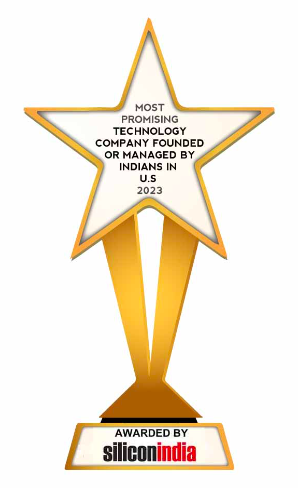With more than nearly 300 production and manufacturing facilities and more than 385,000 employees, the global technology powerhouse Siemens is Europe’s largest industrial manufacturer and one of the most famous enterprises worldwide. Setting the highest standards throughout their line of business using innovative concepts and technologies, the company is constantly striving for new ways to improve existing concepts.
EHS & QHSE are crucial for employee & factory security
Ensuring the safety and health of their employees is an important and ever-present matter for companies worldwide. Especially industrial enterprises in the manufacturing business, whose employees work with heavy machinery in factories, face the challenge of continuously sensitizing their staff to issues such as plant security and occupational safety. For this reason, EHS training provides the staff with valuable insights about their workplace, underlying processes and implemented safety measures.
Since these measures are so crucial for the safety of their staff, companies are constantly looking for ways to make EHS training more efficient. Immersive technology like Virtual Reality elevates the learning effect for employees, helping them to grasp the training content faster as well as to apply them more confidently. Siemens has acknowledged exactly this and successfully implements Virtual Reality to train its employees.
What is EHS?
EHS (short for Environment, Health, Safety) is a discipline that focuses on implementing practical aspects of environmental protection, risk reduction and safety at work. When it is combined with Quality Management, it is commonly referred to as QHSE. Other common acronyms are, among others, OHS, SHE, HSSE, QEHS and QHSSE.
Embracing the ”new normal” with Virtual Reality
In collaboration with VRdirect, Siemens created a virtual tour through one of their industrial facilities, digitally depicting the different work places. In this first use case, the virtual tour was complemented by additional and important information on EHS concepts. Users can explore the immersive and interactive training environment on their own while actively engaging with the necessary information. Through adding new features, the Virtual Reality project was continuously developed into a virtual escape game, facing users with a timed challenge where they have to apply everything they have learned to escape a fire emergency scenario.
This way, not only did the Virtual Reality experience make users engage more actively with the learning materials, but it allowed them to immediately test their knowledge in a fun and entertaining way. Using the VRdirect platform, Siemens can easily publish Virtual Reality projects on various devices, meaning VR headsets, mobile devices and PCs. The Escape Game was presented by Siemens at the Health & Safety Week, an internal event focussing on all topics regarding EHS. Staff members of many different departments were able to experience the project via Virtual Reality headsets but could also try out the web version on a PC.
Wide range of applications of Virtual Reality in EHS & QSHE
The unique way Siemens tackles the challenge of training staff for plant security and occupational safety shows the potential of Virtual Reality for EHS training as well as Quality Assurance. There is a broad spectrum of possibilities opening up when using immersive technology. Virtual Reality allows users to experience virtual surroundings up close and in an interactive way. This makes the technology viable for creating virtual simulations (for training & onboarding purposes, for example) as well as for actual simulations of real circumstances. The latter is especially suited for quality control or workplace inspections that can be done remotely.
There are many possible use cases for Virtual Reality in EHS and QSHE, for example:
Easy onboardings in lifelike workplace surroundings
Workplace instructions
EHS & QSHE training sessions with integrated quizzes
Visitor Center trainings
Remote workplace inspections
Quality Assurance
Another huge benefit of Virtual Reality solutions is that they are constantly available via a multitude of devices. Once developed, a Virtual Reality application created for EHS training in a specific scenario can be used by employees anytime from any place without further preparation or supervision, greatly reducing the effort required to properly train staff members. Employees who are responsible for occupational safety can gain insights on different workplaces without the need to physically be there – all that is needed are a series of 360° captures and a platform to create and publish an immersive Virtual Reality experience.
Virtual Reality experiences engage with employees for better EHS / QSHE training results
The Escape Game was very well received by the participating Siemens employees at the event. Through the VRdirect platform, solutions like the Escape Game can furthermore be distributed via all common devices to specific users – without restrictions regarding time and place. Especially in times of the COVID-19 pandemic, where personal contact is limited to a minimum and the opportunities to conduct offline training are rare, the constant availability of Virtual Reality experiences is a huge benefit. This way, applications can be offered to employees remotely, regardless of which device the specific target groups can or wants to use.
Virtual Reality allows for immersive experiences even beyond training scenarios
Thanks to its easy-to-use approach, the VRdirect platform allows the use of Virtual Reality not only for EHS and QHSE, but also for a myriad of departments and use cases, for example Sales & Marketing, Human Resources, training in general as well as on- and offline events. With no special development skills needed, Siemens departments can create complete Virtual Reality applications quickly and easily on their own. The broad feature set of the platform allows for the creation of immersive Virtual Reality projects that are not limited to virtual tours only, but allow for countless fields of application. In only a short amount of time, divisions can create Virtual Reality experiences tailored to their own specific needs with nothing more than a clear idea of a story and a couple of 360° images or videos. With the VRdirect platform, projects can also be constantly updated or developed further in real-time.
The potential of one Virtual Reality platform as a Virtual Reality mainstream tool for various departments
Besides the success of the EHS Escape Game, a number of other Siemens departments have already implemented or are currently developing Virtual Reality use cases with a similar approach using the VRdirect platform. Besides a web portal, the Siemens VR app (available in the company’s internal app store soon) serves as a central hub that allows code protected access to the Virtual Reality projects. Siemens IT APD GLS in Munich has acquired the platform as a potential mainstream tool for internal Virtual Reality projects:
“We needed a solution that allowed a company wide roll-out, meaning quick and easy implementation and distribution of stable Virtual Reality projects. With VRdirect multiple businesses are now starting with Virtual Reality, publishing to the one internal Siemens VR app – and they don’t need expert knowledge or a complex technical set up.”
Daniela Peine
IT APD GLS
Next to VRdirect, Siemens IT APD GLS remains the internal contact for the solution, allowing departments worldwide to realize straightforward use cases in Virtual Reality.





























